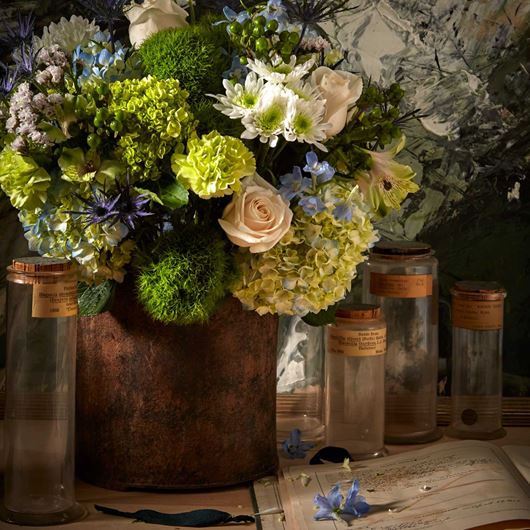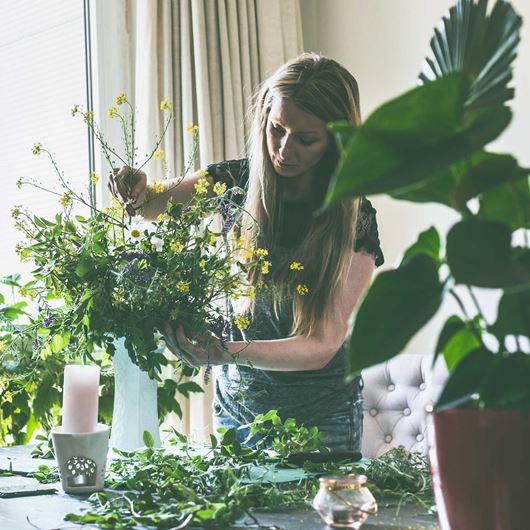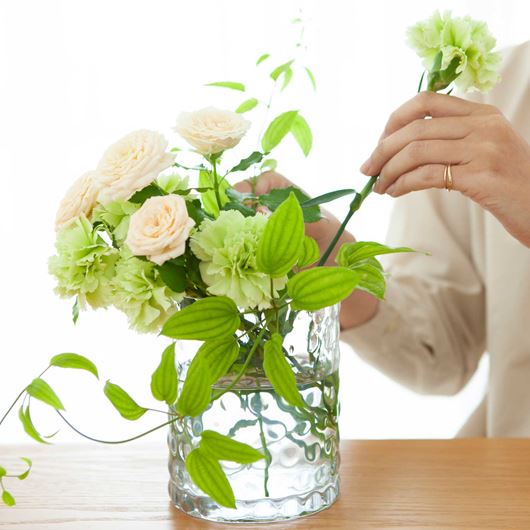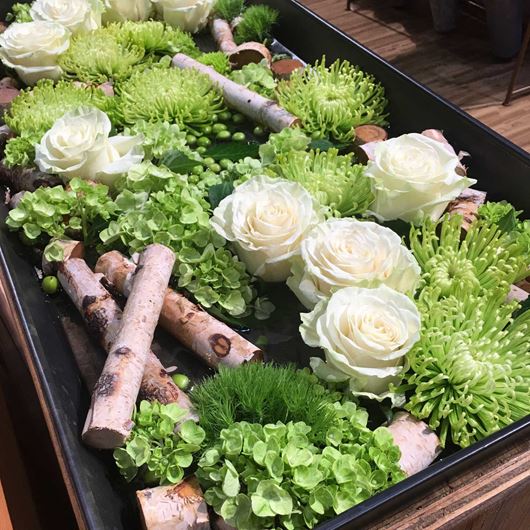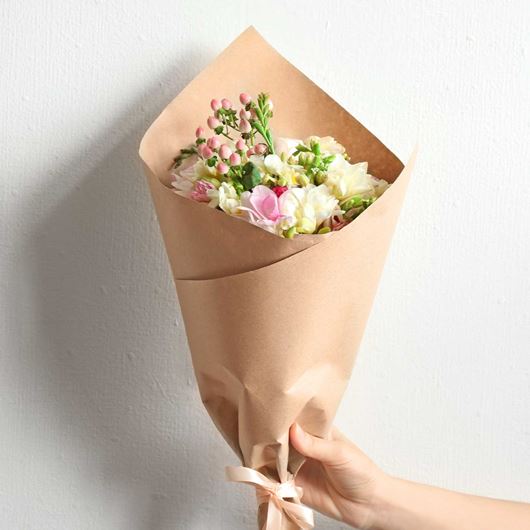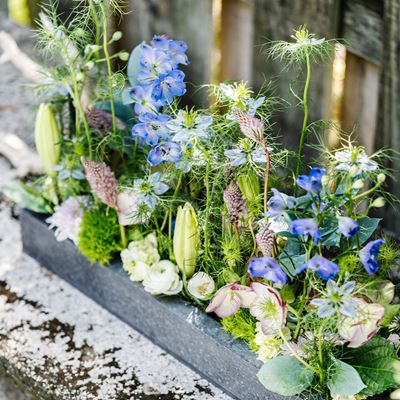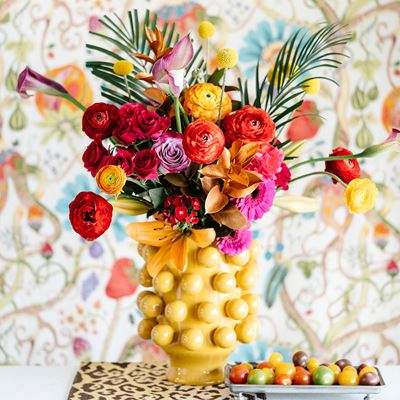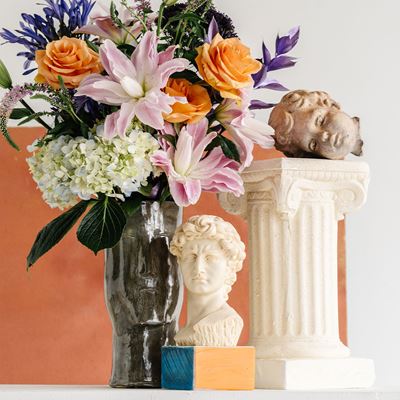Completing our 2023 lookbook series, our sixth and final trend, ATMOSPHERIC, pays homage to our planet's habitats at large. This trending macro view gathers an immersive palette of cool hues, borrowed from the oceans and forests, and pairs it with glowing bright white.
If Your Flowers Are Dying Quickly, It Might Be Your Own Darn Fault
Whether it’s a bold bouquet or a single stem of your favorite bloom, flowers should enliven your space—and your mood—for as long as they can. Unfortunately, not all flowers are created equal and their longevity varies according to the flower type. However, there are important do’s and don'ts that will significantly affect the vase life of fresh cuts.
The key to keeping fresh cut flowers looking pristine for as long as possible is their care. Here are 10 easy ways to guarantee the maximum vase life of your beloved blooms.
1. Always use flower food. If packets of flower food are not included with your fresh flowers, get some; and if you’re a professional, consider a dose management system. Scientifically engineered flower food, rather than most homemade remedies that can be found online, is the best line of defense against the forces—like bacteria—that cause fresh flowers to wilt prematurely.
2. Mix food packets precisely. Read and follow the mixing instructions for flower food carefully. Some flower food packets, for example, mix with one pint of water, but other brands may be different. Measure the required amount of water—cool water is usually best—and mix the packet’s ingredients until they are completely dissolved (again, for professionals, use that dosage machine religiously).
3. Use clean containers. Nearly any container that holds water can serve as a vase for flowers. Just rinse it out thoroughly to ensure the vessel is clean before you pour in the perfectly mixed flower solution. Flower shop displays and storage buckets require disinfectants. Like flower foods, many are specifically developed for florists.
4. Cut the stems. Before you drop your fresh flowers into your vase of choice, diagonally trim each stem about one inch from the base. Although cutting on the diagonal does not allow the stem to drink more, as once believed, it will keep the stems from landing flat on the bottom of their container—which could impede water intake. And if you have a short vase, you’ll want to trim even more off. Oftentimes, shorter stems allow flowers to take up water more effectively, which can lead to a longer vase life.
5. Remove extra foliage. Flowers displayed inside water-filled vases look modern and chic, but those presentations aren’t focused on maximizing vase life. To boost the longevity of your blossoms, remove any leaves or branches that fall below the water line. This keeps the vase’s water clean (and free of odors) by preventing bacteria from growing.
6. Change the water regularly. Every two or so days, dump out the vase’s old water and give it a good rinse. If you have additional flower food packets, mix the food according to instructions and pour it into the vase. If you don’t have any more flower food, just use fresh, cool water. For florists, make sure you have a protocol to regulate freshness for storage and display.
7. Trim the stems again. It never hurts to give your flowers a fresh cut, so trim the stems another half an inch each time you change out the water. This supports the stems’ hydration and allows the blossoms to continue taking up water effectively.
8. Avoid direct heat and sunlight. Once flowers are cut, sunlight hurts rather than helps. Your arrangements will last longest if you place them out of direct sunlight and away from heat sources, such as vents.
9. Toss any stems that are wilting. Because different types of flowers age at different rates, some will begin to wilt before others. Make sure to get rid of those that appear to be dying, since they may produce gases that will prematurely age the rest of the arrangement. Plus, they don’t look good, so there’s no reason to hang on to them.
10. Keep your flowers cool. Florists refrigerate their flowers to keep them fresh and sprightly, so, if a cool space is handy at home, you should give that approach a try. Although plenty of scientific evidence proves that flowers benefit from cooler temperatures from the moment of harvest to the time of sale, some studies also show that lower (but not freezing) temperatures help flowers last longer in the home as well.
